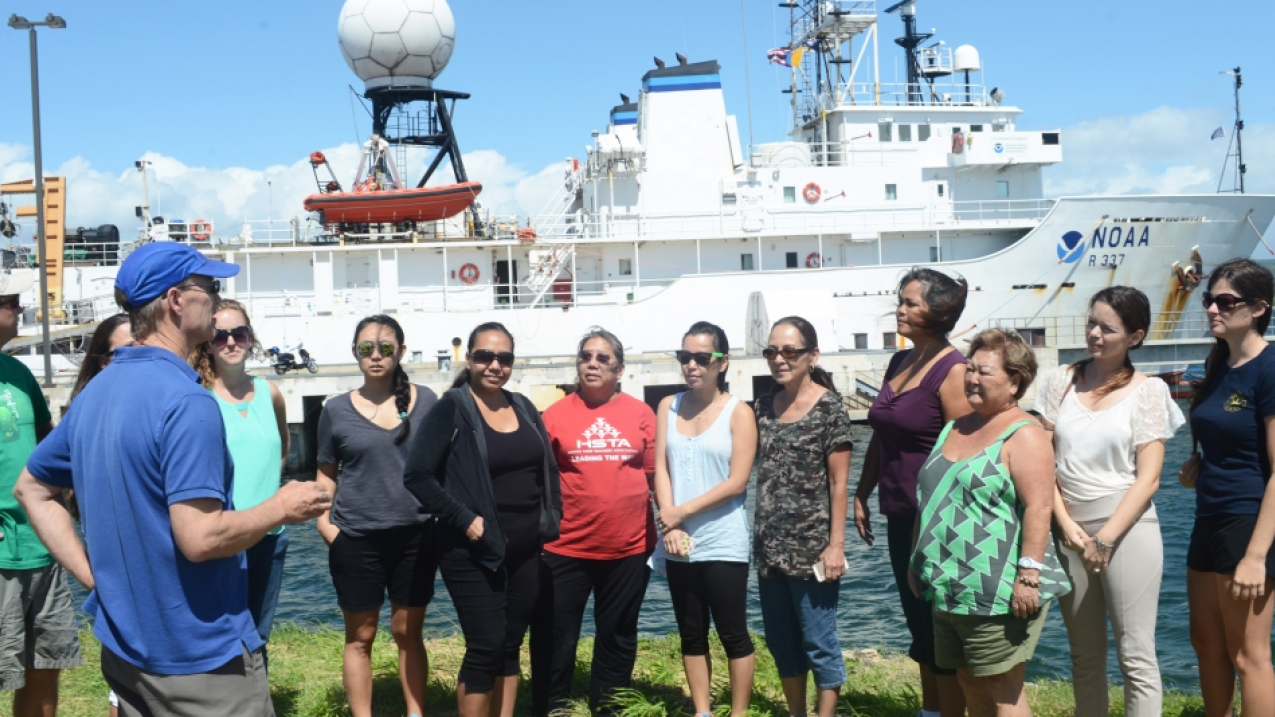The central and western Pacific marine national monuments and national marine sanctuaries encompass over 742,000 square miles of emergent land, coral reef, ocean, and maritime heritage resources. Their designation is unprecedented in terms of geographic scope, ecological value, and national symbolism for ocean conservation. However, their remoteness creates substantial challenges, as most deep-water areas remain poorly known.

Educators participate in professional development connected to NOAA Ship Okeanos Explorer. (Image credit: NOAA)
In 2015, NOAA and partners initiated the Campaign to Address Pacific Monument Science, Technology, and Ocean NEeds (CAPSTONE), a three-year initiative to collect deep water baseline information to support science and management decisions in and around the central and western Pacific. CAPSTONE also provides unique opportunities for NOAA's Office of Ocean Exploration and Research (OER) to offer onsite professional development to educators to enhance ocean literacy in remote locations.
To introduce CAPSTONE expeditions conducted by the NOAA Ship Okeanos Explorer, educators from Saipan, Guam and American Samoa participated in Why Do We Explore the Marianas Trench National Marine Monument? and Why Do We Explore the Deepwater Areas of American Samoa? The 8-hour professional development courses were designed and offered by OER and NOAA Fisheries Marine National Monument Program and hosted by the National Marine Sanctuary of American Samoa, the Northern Mariana Islands Public School System, Guam Public School System, and the American Samoa Department of Education.

On Guam and Saipan, interactions with educators and students have included port-side ship tours, real-time at-sea communication with the ship, tours of ship-to-shore based telecommunication centers, and presentations by members of the science team. Special events offered at public aquariums have highlighted live video feeds from the ROV Deep Discoverer and community-based exhibits have been organized to convey the importance of exploration in these deep water monuments and sanctuaries.
These offerings not only enhanced awareness of deep-water ecosystems, but they also made educators aware of future Okeanos Explorer CAPSTONE expeditions in their regions and how they could follow along with the explorations in real-time. Nearly all educators who participated reported that they would use materials from the workshop, anticipating that nearly 8,200 students would be reached.
During past CAPSTONE missions, online coverage of the expeditions, including live video feeds, were streamed to shore throughout the expeditions, allowing thousands to join dives from shore. In 2016, there were more than 740,000 visits to CAPSTONE-related web content. Expedition information and observations were shared through social media venues including Facebook and Twitter. Live video feeds via telepresence reached the public with a record-breaking 4.3 million views. The Okeanos Explorer is anticipated to visit American Samoa in 2017.
This story was provided by NOAA's Office of Ocean Exploration and Research, a member of the NOAA Education Council, as part of our ongoing effort to share education accomplishments from across NOAA.



